A heavy rigid motor vehicle is a vehicle with two axle sets, a driver’s position, a steering system, motive power and a single rigid chassis.
Vehicles registered as a single vehicle but that have a chassis split into two dependent parts that are connected by a permanent steering pivot are also classed as rigid vehicles.
Vehicles with dimensions greater than those set out in the diagram on the next page are classed as overdimension vehicles. For more information, refer to factsheet 53a Overdimension vehicles and loads, or contact the Overdimension Permit Issuing Agency on 0800 OVERSIZE (0800 683 774) or fax 06 953 6313.
Factsheet 53a Overdimension vehicles and loads online(external link)
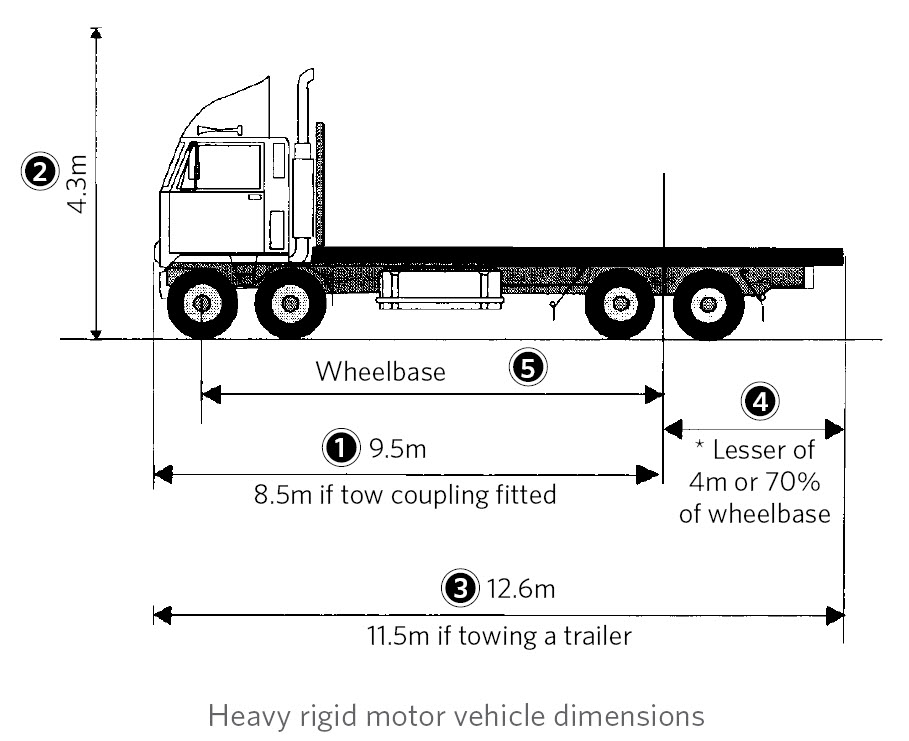
Heavy rigid motor vehicle dimensions
1. Forward distance
Forward distance for a rigid vehicle is the distance from the rear axis to the front of the vehicle or its load, whichever is foremost (excluding collapsible mirrors).
The maximum forward distance for heavy rigid vehicles without a tow coupling is 9.5 metres. Heavy rigid vehicles with a tow coupling are restricted to a maximum forward distance of 8.5 metres.
2. Maximum height
The maximum height above ground is 4.3 metres.
3. Overall length
Maximum length for a heavy rigid vehicle (including load, but excluding collapsible mirrors) that is not towing a trailer is 12.6 metres. When towing a trailer, the maximum length of the vehicle is 11.5 metres. Buses can be a maximum of 13.5 metres long.
4. Rear overhang
The distance from the rear axis to the rear of the vehicle or its load, whichever is greater.
For a heavy rigid vehicle with a non-steering axle as the rearmost axle, the maximum rear overhang is either 4.0 metres or 70 percent of wheelbase (A in the diagram below), whichever is less. In the diagram below, the rear axis is at the centrepoint of the non-steering axle or axles.
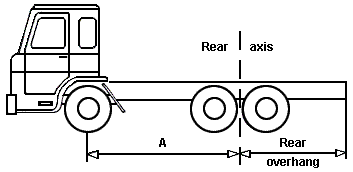
Rear overhang
For a heavy rigid vehicle with a steering axle as the rearmost axle, the maximum rear overhang is either 4.25 metres or 70 percent of wheelbase, whichever is lesser.
5. Wheelbase
Wheelbase is measured from the rear axis to the centre of the foremost axle.
Maximum front overhang, measured from the front edge of the driver’s seat (in its rearmost position) to the foremost point of the vehicle or its load, is 3 metres.

Front overhang
The maximum width (including any load) is 2.55 metres, or 1.275 metres from each side of the longitudinal centre-line of the vehicle. The only extra width allowed is:
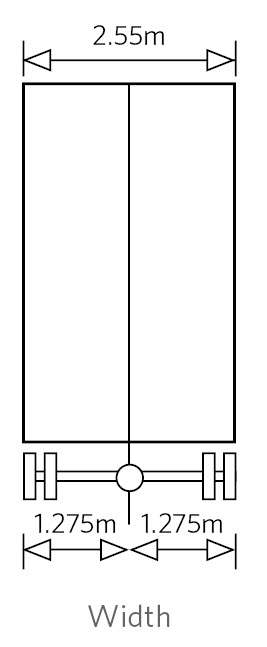
Width
A heavy rigid vehicle must have a front axle set consisting of a:
A heavy rigid vehicle must have a rear axle set consisting of a:
Single axle set means either one axle or two axles where the centres are spaced less than 1 metre apart.
Tandem axle set means two axles where the centres are spaced no less than 1 metre and no more than 2 metres apart.
Tri-axle set means three axles where the centres of the first and third axles are spaced no less than 2 metres and no more than 3 metres apart. All the axles contain an equal number of tyres. None of the axles is a single standard-tyred axle.
Twin-steer axle set means an axle set of two axles with single tyres, with both axles connected to the same mechanism in order to steer similarly.
Quad axle set means four axles spaced not less than 3.75 metres and not more than 4 metres apart. All the axles contain an equal number of tyres. None of the axles is a single standard-tyred axle.

Note: all weights are in kilograms.
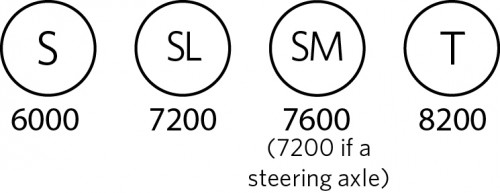
Single axle set
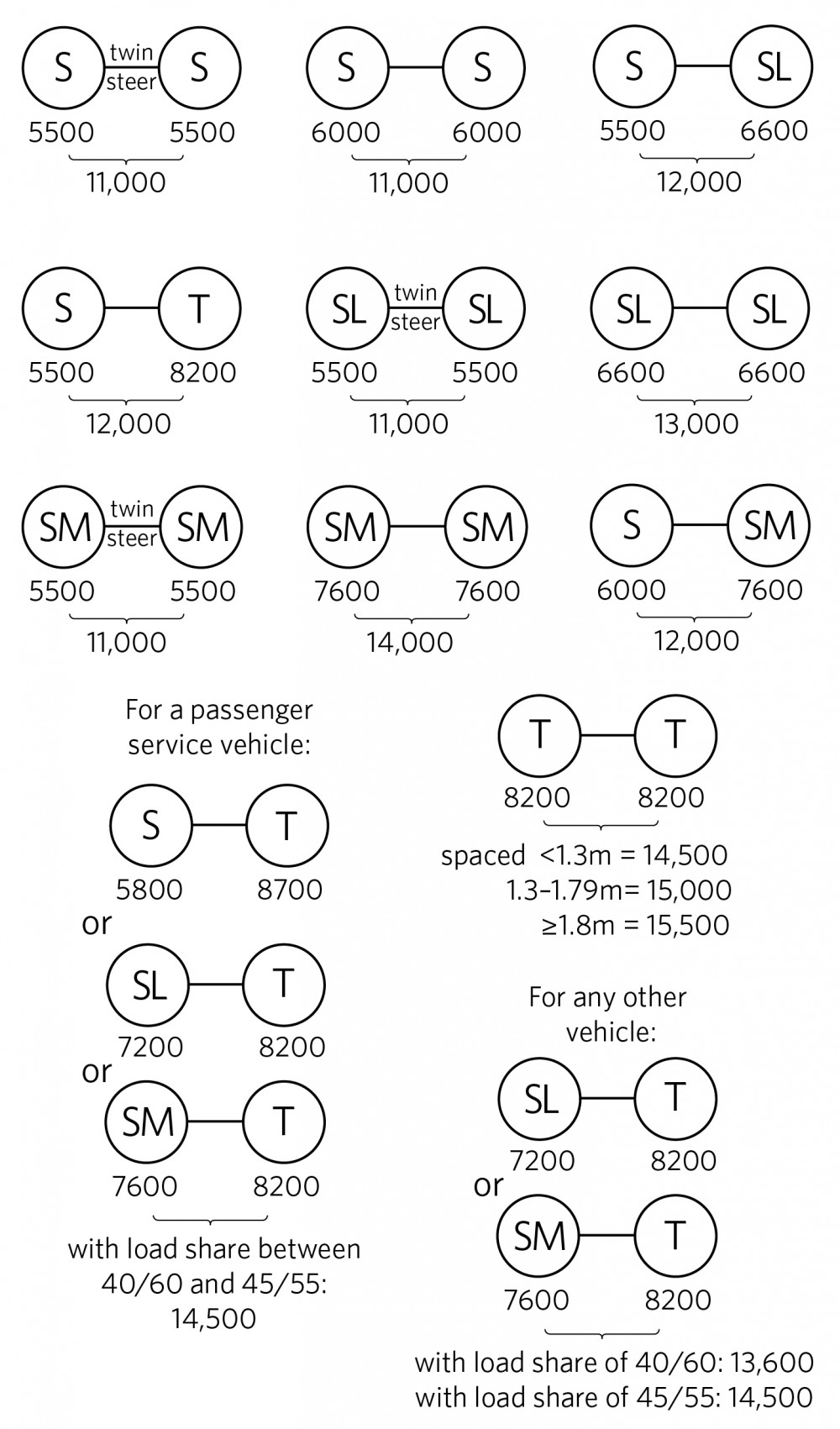
Tandem axle set
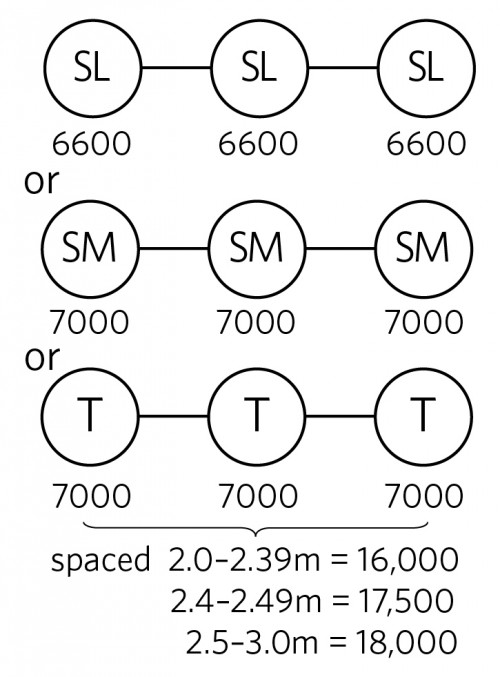
Tri-axle set
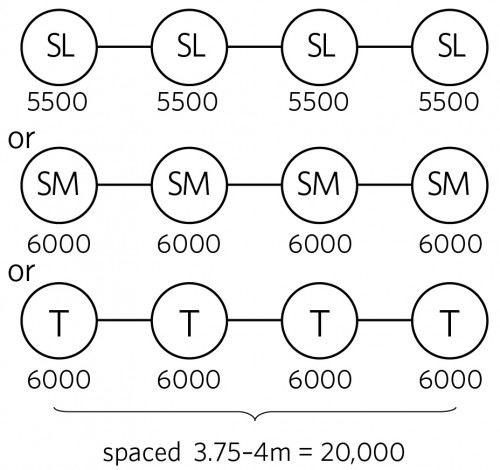
Quad-axle set
Note: for weights on oscillating axles and other axle combinations not shown here, see the Land Transport Rule: Vehicle Dimensions and Mass 2016.
In addition to having a mass on their axle sets within the limits shown in the diagrams above, heavy vehicles also need to have a total mass that is within the limits set out in the following table, when the distance from any axle in any set to any other axle in another set is measured.
The following table sets out the maximum sum of the mass on any multiple axles that together do not constitute a single tandem axle set, single tri-axle set or single quad-axle set.
| Distance between centre of first axle to centre of last axle (metres) | Maximum gross weight (kilograms) |
| 1.8 or more, but less than 2.5 | 15,500 |
| 2.5 or more, but less than 3.0 | 17,500 |
| 3.0 or more, but less than 3.3 | 19,000 |
| 3.3 or more, but less than 3.6 | 20,000 |
| 3.6 or more, but less than 4.0 | 21,000 |
| 4.0 or more, but less than 4.4 | 22,000 |
| 4.4 or more, but less than 4.7 | 23,000 |
| 4.7 or more, but less than 5.1 | 24,000 |
| 5.1 or more, but less than 5.4 | 25,000 |
| 5.4 or more, but less than 5.8 | 26,000 |
| 5.8 or more, but less than 6.4 | 27,000 |
| 6.4 or more, but less than 7.0 | 28,000 |
| 7.0 or more, but less than 7.6 | 29,000 |
| 7.6 or more, but less than 8.2 | 30,000 |
| 8.2 or more, but less than 8.8 | 31,000 |
| 8.8 or more, but less than 9.4 | 32,000 |
| 9.4 or more, but less than 10.0 | 33,000 |
| 10.0 or more, but less than 10.8 | 34,000 |
| 10.8 or more, but less than 11.6 | 35,000 |
| 11.6 or more, but less than 12.0 | 36,000 |
| 12.0 or more, but less than 12.5 | 37,000 |
| 12.5 or more, but less than 13.2 | 38,000 |
| 13.2 or more, but less than 14.0 | 39,000 |
| 14.0 or more, but less than 14.8 | 40,000 |
| 14.8 or more, but less than 15.2 | 41,000 |
| 15.2 or more, but less than 15.6 | 42,000 |
| 15.6 or more, but less than 16.0 | 43,000 |
| 16.0 or more | 44,000 |
| 16.8 or more with a minimum of 7 axles | 45,000* |
| 17.4 or more with a minimum of 8 axles | 46,000* |
*See the Transport Agency website for approved routes for operation from 1 February 2017
Note: vehicles may operate at a higher mass if on a high productivity motor vehicle permit. More information about HPMVs is set out in factsheet 13g High productivity motor vehicles
Factsheet 13g High Productivity motor vehicles(external link)
An axle that is fixed and does not steer.
In order to retain sufficient grip on the road surface when turning, it’s recommended that buses and trucks have a minimum mass (weight) on their front axle(s). This mass shouldn’t go below 20 percent (one-fifth) of the total mass on the axles of that vehicle. Drivers need to be aware of this at all times. The vehicle needs to be loaded in an appropriate way so this is achieved. Placing all the load behind the rear axles of the vehicle isn’t recommended.
Heavy rigid vehicles first registered on or after 1 July 2002 must have at least 20 percent of their mass on the front axles at all times.
Heavy rigid vehicles may have retractable axles in the rear axle set, provided:
Note: only unladen vehicles can operate with an axle retracted.
ImportantIn 2012, 83 trucks overturned. One every 4.4 days. |